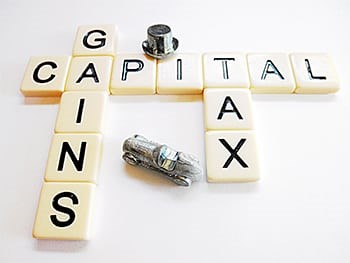Fill ‘Er Up Please. On Lower Taxes!
Remember the days before self-service when you could drive your car to a gas pump and tell the attendant to “fill ‘er up”? There are good reasons to take the same approach to selling securities before the end of the year. If you’re careful to fill up your lower tax brackets with long-term capital gains, you can pocket some cash and pay little, if anything, in federal income tax.
Before you start filling up tax brackets, it’s important to understand the basic tax rules affecting capital gains.
Currently, there are seven federal income tax brackets ranging from 10% to 37%. Most “ordinary income,” as well as short-term capital gains from sales of assets you hold a year or less, is taxed under this graduated rate structure. But long-term capital gains from selling securities you’ve owned longer than a year may be taxed at three capital gain rates:

• The 0% rate applies to long-term capital gains of investors in the two lowest brackets (10% and 12%).
• The 15% rate applies to long-term gains of those in the middle three brackets (22%, 24%, and 35%).
• The 20% rate applies to long-term gains for married investors over $488,850 and $434,550 for singles.
With the tax system’s graduated rate structure, even investors whose capital gains eventually will push them into the 37% tax bracket may be able to benefit from having part of their capital gains taxed at the lower 0% and 15% rates. That’s what tax bracket management is all about.
The best way to explain the concept of filling up tax brackets with long-term gains may be with an example.
Hypothetical facts: Suppose that 2019 will be a low-income year for you because of losses from your S corporation or other business circumstances. Not including your investment income, your taxable income on a joint federal return should be only $55,000, but the upper threshold of the 15% bracket is $78,950. That leaves room for another $23,950 of income ($78,950 – $50,000) before you reach the 22% bracket—and the 15 % bracket for long-term capital gains. So, if you pull down a $23,950 long-term gain before year-end, the entire amount will be taxed at the 0% rate.
What’s more, consider that the upper threshold for the 35% rate is $488,850. (Joint Filers) Any other long-term gains below that threshold will be taxed at the 15% rate.
Of course, there are other factors to consider, including the 3.8% surtax on net investment income. Also, be aware that capital losses offset capital gains plus up to $3,000 of annual ordinary income. But the long and the short of it all is: You can manage your tax brackets to maximize favorable tax rates for long-term capital gains. Obviously, taxes can be impacted by many issues and consulting a tax professional as it relates to your capital gains may be beneficial.
The opinions expressed in this article are those of author and should not be construed as specific investment advice. All information is believed to be from reliable sources, however, no representation is made to its completeness or accuracy. All economic and performance information is historical and not indicative of future results. Any tax advice contained herein is of a general nature. Further, you should seek specific tax advice from your tax professional before pursuing any idea contemplated herein.
Fee-Based Planning offered through W3 Wealth Advisors, LLC – a State Registered Investment Advisor – Third Party Money Management offered through Valmark Advisers, Inc. a SEC Registered Investment Advisor – Securities offered through Valmark Securities, Inc. Member FINRA, SIPC – 130 Springside Drive, Suite 300 Akron, Ohio 44333-2431 * 1-800-765-5201 – W3 Wealth Management, LLC and W3 Wealth Advisors, LLC are separate entities from Valmark Securities, Inc. and Valmark Advisers, Inc.
Investing involves risk including the potential loss of principal. No investment strategy can guarantee a profit or protect against loss in periods of declining values. Diversification cannot assure a profit or guarantee against a loss. Indices are unmanaged and do not incur fees. One cannot directly invest in an index.
Certified Financial Planner Board of Standards Inc. (CFP Board) owns the certification marks CFP®, CERTIFIED FINANCIAL PLANNER™, CFP® (with plaque design), and CFP® (with flame design) in the U.S., which it authorizes use of by individuals who successfully complete CFP Board’s initial and ongoing certification requirements.
